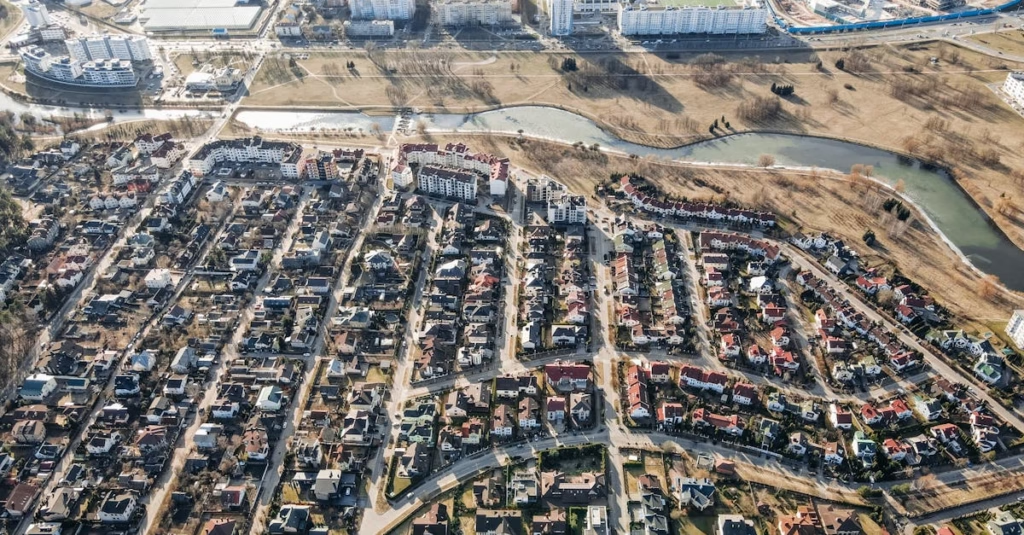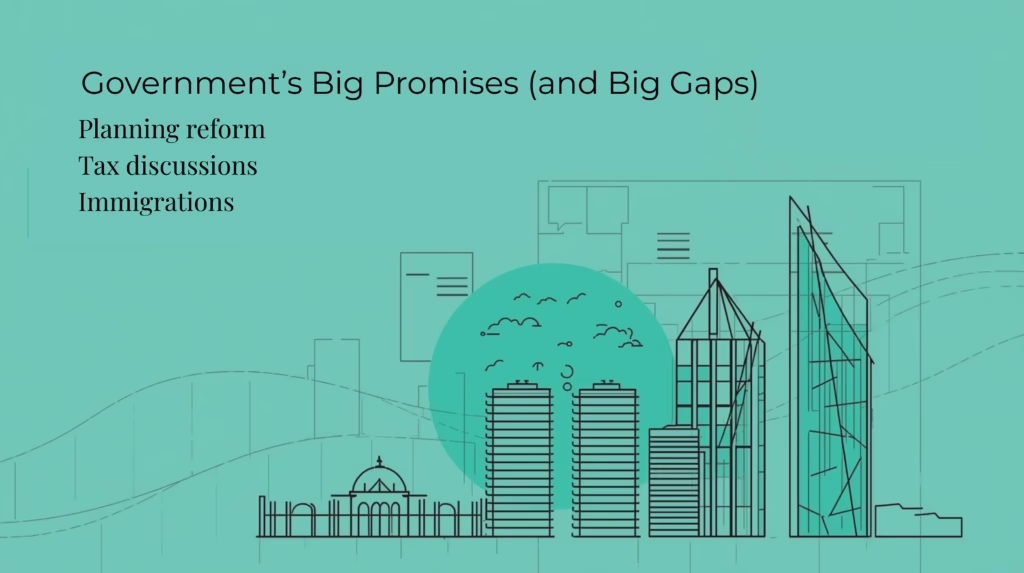Australia’s staring down a housing crisis that no election promise or quick policy fix can solve.
The federal government wants 1.2 million new homes by 2029—but the math doesn’t work.
Even if every builder, planner, and council worked flat-out, we’ll still fall hundreds of thousands of dwellings short.
This isn’t a one-year blip. It’s a decade-long squeeze that will shape how every buyer, investor, and renter lives (and pays) for housing.
Let’s break down what’s really happening—and how you can protect yourself or even profit despite the chaos.
show moreAustralia’s Housing Numbers Don’t Stack Up
The government’s target requires about 240,000 new dwellings every year for five straight years.
Sounds achievable? History says otherwise.
- In 2017—our best construction year on record—Australia delivered roughly 220,000 dwellings.
- In 2025, we’re already 15,000 homes behind target just three months into the National Housing Accord.
- Forecasts from the Urban Development Institute of Australia (UDIA) predict we’ll build only 938,000 homes by 2029—a shortfall of 262,000 to 462,000 homes.
When demand outpaces supply this badly, prices and rents only move one way: up.

Australia’s Housing Pipeline Is Drying Up
Several forces are strangling supply at the same time:
Construction Costs Exploded
Material prices jumped 30–40% between 2019 and 2023.
Trades are charging a 5.5% annual premium, outpacing national wage growth of 3%.
Projects that looked profitable two years ago now fail feasibility tests, forcing developers to shelve plans.
Labour Shortage
The industry needs an extra 130,000 workers—today.
Apprenticeships take four years. Baby Boomers are retiring faster than new workers arrive.
Even with a dedicated construction visa, the talent gap can’t close overnight.
Planning Bottlenecks
Local councils and state governments drown projects in red tape: heritage concerns, environmental reviews, neighbour objections.
These delays add years of holding costs, killing project viability.
Policy Whiplash
Tax settings, planning rules, and building codes change every election cycle.
Developers can’t commit billions to projects when the goalposts keep moving.
Australia’s Real Estate: Harsh Reality for Buyers and Renters
Here’s what the shortage means on the ground:
- Renters: Vacancy rates hover near record lows. Capital city rents rose 8.5% in 2023 and are still climbing around 5% annually.
- First-home buyers: Waiting for a price crash? Don’t hold your breath. Limited supply plus population growth equals continued upward pressure.
- Investors: Supply constraints create pockets of rapid capital growth—but you need to pick markets carefully to avoid buying at the peak.

Government’s Big Promises (and Big Gaps)
Yes, there are reforms in motion:
- Planning reform in NSW, Victoria, and Queensland to fast-track approvals.
- Tax discussions around build-to-rent incentives and stamp duty reform.
- Calls for a dedicated construction visa to import skilled labour.
But even if every reform passed tomorrow, results would take 7–10 years to filter through planning systems and labour pipelines.
This is why the crisis isn’t a five-year problem. It’s a multi-decade challenge.
How Buyers Can Adapt and Still Get Ahead
You can’t change the macro trends—but you can change your strategy.
Act Early
Delaying “until prices drop” is dangerous in a supply-constrained market.
Every year of waiting means higher entry prices and rising rents.
Look Beyond Houses
Units, townhouses, and well-located regional properties often provide better value and yield than freestanding homes in capital cities.
Focus on Quality
Tight markets reward location, amenities, and build quality.
Buy near transport, schools, or employment hubs for resilience.
Leverage Government Support
Grants and first-home buyer schemes can shave tens of thousands off your costs.
Use them while they last.
Build a War Chest
Rising rates and costs mean you need a buffer.
Target at least 3–6 months of repayments in savings.
Investor Playbook for a Decade of Shortage
Smart investors know that structural undersupply means long-term growth.
Here’s where to look:
- Supply-constrained suburbs within major capitals.
Think inner-west Sydney or Melbourne growth corridors with limited land release. - Build-to-rent projects as policy incentives improve.
- Regional hubs like Geelong, Newcastle, and Sunshine Coast, where infrastructure spending supports population growth.
Remember: This isn’t about flipping in 12 months.
It’s about patient capital that rides a decade-long imbalance.
Renters: Survive and Thrive
If you’re renting, the next few years will be tough.
Here’s how to stay ahead:
- Budget for annual rent hikes—assume 5–7%.
- Strengthen your rental history with spotless payment records.
- Consider regional or outer-ring suburbs for better value.
- Save aggressively for a deposit. Ownership remains the best hedge against rising rents.
Policy Fixes Australia Actually Needs
To truly solve the crisis, governments must show political courage:
- Tax Overhaul: Incentivise institutional investors and reduce build-to-rent penalties.
- Planning Reform: Slash approval times without sacrificing quality.
- Construction Visa Program: Import skilled labour to fill critical gaps.
- Infrastructure Commitment: Fund transport, schools, and utilities to enable large-scale development.
Without these, the 1.2M home target is pure fantasy.
Key Takeaway
Australia’s housing shortage isn’t a headline.
It’s structural reality that will shape property markets for the next decade.
Whether you’re buying your first home, adding to an investment portfolio, or renting, one truth stands out:
Waiting is the most expensive decision you can make.
Act now—armed with the right data and strategy—and you’ll not only survive this decade-long crunch, you might actually thrive.
Next Steps
- Track live housing data at the Australian Bureau of Statistics and UDIA.
- Work with a buyer’s agent like me to identify supply-constrained suburbs.
- Review your financing with a mortgage broker before rates rise again.
The housing crisis is real.
But with smart moves today, you can turn Australia’s biggest property challenge into your greatest opportunity. Book your Strategy Session today.
